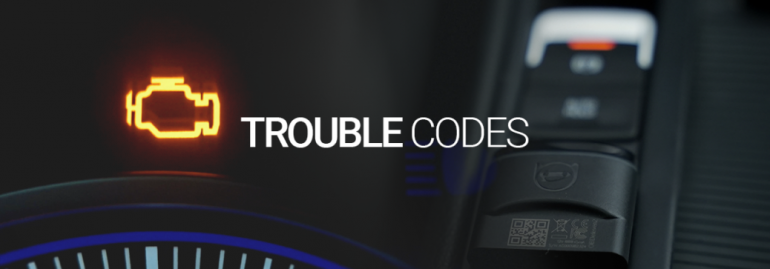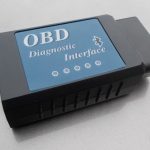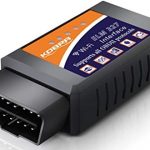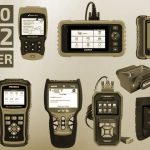Diagnostic scanners have revolutionized how we understand and maintain our vehicles. These powerful tools provide a window into the inner workings of a car’s electronic systems, empowering car owners and mechanics to diagnose and troubleshoot problems with greater efficiency and accuracy. This comprehensive guide explores the world of diagnostic scanners, covering their types, functionalities, protocols, troubleshooting applications, software and hardware options, and future trends.
What is a Car Diagnostic Scanner?
A car diagnostic scanner, also known as an On-Board Diagnostics (OBD) scanner or code reader, is an electronic device that connects to a vehicle’s OBD port. This port, typically located under the dashboard on the driver’s side allows the scanner to communicate with the car’s onboard computer system. By accessing the vehicle’s computer, the scanner can retrieve Diagnostic Trouble Codes (DTCs), which are alphanumeric codes that indicate specific issues within the vehicle’s systems.
Since 1996, all gasoline cars and light trucks sold in North America have been required to have an OBD-II system. Diesel vehicles were phased in later. This system monitors various aspects of the vehicle’s performance, including emissions, fuel economy, and drivability. When a problem is detected, the OBD-II system generates a DTC and stores it in the vehicle’s computer memory. Many car owners can now diagnose minor faults themselves with simple tools, reducing the frequency of trips to the dealership.
Evolution of Diagnostic Scanners
Diagnostic tools have come a long way. They have evolved from simple code readers to complex multi-system analyzers, revolutionizing vehicle maintenance and repair. Early diagnostic tools were primarily used to read and clear trouble codes, providing basic information about engine-related problems. As automotive technology advanced, so did diagnostic scanners. They now offer a wide range of features, including live data streaming, bidirectional control, and module programming, enabling more comprehensive and accurate diagnostics.
Types of Diagnostic Scanners
Diagnostic scanners come in various forms, each with its own set of features and capabilities. Here are some of the most common types:
- OBD-I Scanners: These scanners work with pre-1996 vehicles. They are designed to communicate with the older OBD-I systems, which were not standardized like the later OBD-II systems.
- Engine Code Readers: These are basic scanners that primarily read and clear engine-related trouble codes. They are affordable and easy to use, making them suitable for basic diagnostics.
- Display OBD-II Scanners: These scanners provide the error codes generated by your vehicle’s computer. These codes supply limited information but they are a starting point for further diagnosis.
- Diagnostic OBD-II Scanners: These scanners deliver more detailed information on a vehicle’s insides, such as coolant temperature and air-fuel ratio. Other features of this type of scanner include technical service bulletins (TSBs), technical advice, module testing, and graphing.
- Bluetooth/WiFi OBD2 Scanners: These scanners connect wirelessly to smartphones or tablets, allowing users to view and interpret diagnostic data on their mobile devices. They offer portability and user-friendly interfaces.
- OBD2 Gauges and Monitors: These devices display real-time data from the vehicle’s sensors in the form of gauges. They are useful for monitoring parameters like engine temperature, speed, and fuel consumption.
- Multi-System Scan Tools: These scanners can diagnose multiple vehicle systems, including ABS, SRS (airbags), transmission, and more. They offer more comprehensive diagnostic capabilities than basic code readers.
- Single-Make Scan Tools: These are specialized scanners designed for specific car brands. They provide in-depth diagnostics and access to manufacturer-specific codes and functions.
- Professional Scan Tools: These are high-end scanners used by professional mechanics. They offer the most comprehensive diagnostic capabilities, including bidirectional control, coding, and programming functions.
Cost of Diagnostic Scanners
The cost of diagnostic scanners can range from under $100 to several thousand dollars. Code readers are generally the more affordable option, while car scanners are more expensive. Basic code readers are typically the most affordable, while professional-grade scanners with advanced features come with a higher price tag. When choosing a scanner, consider your needs and budget.
Features of Diagnostic Scanners
The features of a diagnostic scanner vary depending on its type and price range. Here are some common features:
- Reading and Clearing Codes: All OBD2 scanners can read and clear diagnostic trouble codes.
- Live Data Streaming: Many scanners can display real-time data from various sensors, such as engine RPM, coolant temperature, and oxygen sensor readings. This feature is useful for preventative maintenance by detecting issues early on.
- Freeze Frame Data: This feature captures a snapshot of the vehicle’s system at the time a trouble code was triggered.
- Graphing: Some scanners can generate graphs of sensor data to help visualize trends and anomalies.
- Bi-directional Control: Advanced scanners allow users to send commands to the vehicle’s systems to test components and perform functions like ABS bleeding.
- Control Unit Coding: Advanced scanners can perform Control Unit coding, which allows users to enable or disable certain vehicle features.
- Module Programming: High-end scanners can reprogram the vehicle’s control modules, which is essential for certain repairs and maintenance tasks.
- Manufacturer-Specific Functions: Some scanners support access to proprietary systems and functions for specific car brands.
- Software Updates: Regular software updates ensure compatibility with the latest vehicle models and diagnostic procedures.
- I/M Readiness: This function helps determine if a vehicle will pass an emissions test.
OBD2 Protocols
OBD2 scanners use various communication protocols to interact with a vehicle’s computer system. The most common protocols include:
- ISO 9141-2: An older protocol used mainly in Asian and European vehicles between 2000 and 2004. It uses pins 7 and optionally 15.
- KWP2000: Another older protocol commonly found in Asian and European vehicles, especially those manufactured after 2003. It uses pin 7.
- J1850 VPW: Used in older American vehicles, primarily General Motors. It uses pin 2 and has a communication speed of 10.4 kB/sec.
- J1850 PWM: Used in older American vehicles, primarily Ford. It uses pins 1 and 2, and the communication signal is differential with a rate of 41.6kB/sec.
- ISO 15765 CAN (Controller Area Network): The most modern and widely used protocol in current vehicles, mandatory for all 2008+ vehicles sold in the US. It uses pins 6 and 14. It offers faster data transmission and increased diagnostic capabilities.
When choosing a scanner, it’s essential to ensure it supports the protocols used by your vehicle. As a general rule, you can determine which protocol your vehicle is using by looking at the pinout of the OBD-II connector.
How to Use a Diagnostic Scanner for Troubleshooting
Using a diagnostic scanner to troubleshoot car problems involves the following steps:
- Locate the OBD2 Port: The OBD2 port is typically located under the dashboard on the driver’s side.
- Connect the Scanner: Plug the scanner into the OBD2 port.
- Turn on the Ignition: Turn the ignition key to the “On” position without starting the engine.
- Follow the Scanner’s Instructions: Some scanners may require you to input vehicle information like make, model, and year.
- Read the Codes: The scanner will retrieve and display the diagnostic trouble codes (DTCs). Diagnostic scanners prioritize emissions-related errors.
- Interpret the Codes: Use the scanner’s built-in library, online databases, or a vehicle service manual to understand the meaning of the codes.
- Clear the Codes: After fixing the issue, clear the codes using the scanner.
- Monitor Live Data: If your scanner supports it, monitor live data to observe sensor readings and vehicle performance in real-time.
Interpreting Diagnostic Trouble Codes (DTCs)
When you select “Read Codes” on your diagnostic scanner, it will display a code that needs to be deciphered. The format is always one letter followed by four numbers, like this: P0301.
The letter indicates which system has experienced the fault:
- P: Powertrain systems like the engine, transmission, emissions, and fuel system.
- B: Body control systems, including airbags and other interior-related problems.
- C: Chassis codes like suspension, power steering, and other exterior issues.
- U: Network-related issues.
The first number after the letter is always either a 1 or a 0. If it’s 0, it means it’s a generic code that applies to virtually all manufacturers. If it’s 1, it’s specific to the carmaker. The second, third, and fourth numbers further identify the system and fault.
The third digit shows the system:
- 1: Fuel and air metering.
- 2: Fuel and air metering for injector circuits.
- 3: Ignition system fault or misfire.
- 4: Auxiliary emission controls.
- 5: Vehicle speed control or idle system control fault.
- 7, 8, and 9: Transmission-related codes.
- A, B, and C: Hybrid-specific codes.
The third and fourth numbers further identify where the problem is. For example, the code P0301 indicates a powertrain control module code, that the code is generic, and that it’s for the ignition system or a misfire.
Software and Hardware Options
Software
Various software options are available for diagnostic scanners, ranging from basic code reading applications to professional-grade diagnostic suites. Some popular options include:
- OBDwiz: A comprehensive diagnostic software that supports all OBD-II compliant vehicles. It offers features like customizable dashboards, fuel economy calculations, and data logging.
- OBD Auto Doctor: This software helps identify car issues, monitor real-time data, ensure inspection readiness, and initiate service routines.
- TouchScan: A PC-based software that provides advanced diagnostics and supports various add-ons for specific car manufacturers.
- OBD Fusion: Available for iOS and Android, this app offers enhanced diagnostics, live data, and other features when used with a compatible Bluetooth scanner.
Hardware
Diagnostic scanner hardware varies widely in terms of features, capabilities, and price. Some popular hardware options include:
| Scanner | Type | Connection | Features |
|---|---|---|---|
| ANCEL BD310 | Display/Diagnostic | Corded or Bluetooth | Excellent user interface, options for corded or Bluetooth, supports full OBDII functions, reads and clears codes, provides live data streaming |
| BlueDriver Bluetooth Pro | Diagnostic | Bluetooth | Intuitive app, continuous updates, model-specific features, TSBs, battery reset procedure |
| Innova 5610 | Diagnostic | Corded | Wide range of diagnostic functions, bidirectional control, module testing, ABS bleeding procedure |
| Motopower MP69033 | Display | Corded | Budget-friendly, quickly reads and displays codes, graphing function for live data |
| Foxwell NT301 | Display | Corded | Crisp screen, print function, EVAP leak test, O2 monitor tests |
Warranty and Support
Most diagnostic scanner manufacturers offer warranty and support options for their products. Here are some examples:
- Autel: Provides a one-year warranty on their scanners, covering defects in materials and workmanship.
- Snap-on: Offers extended warranty programs for their diagnostic tools, providing coverage for an additional 12, 24, or 36 months.
- Foxwell Technology: Provides a one-year warranty on their scanners and offers support through their website and distributors.
When choosing a scanner, it’s essential to consider the warranty and support options offered by the manufacturer.
The Future of Diagnostic Scanners
The future of diagnostic scanners is promising, with advancements in technology driving innovation and expanding their capabilities. Here are some key trends:
- Artificial Intelligence (AI): AI is expected to play a significant role in car diagnostics, enabling predictive maintenance, enhanced accuracy, and real-time remote diagnostics.
- Wireless and Remote Diagnostics: The increasing use of wireless technology and cloud-based platforms will allow for remote diagnostics and over-the-air updates.
- Big Data: The analysis of large volumes of vehicle data will enable more accurate diagnostics, predictive maintenance, and personalized recommendations.
- Augmented Reality (AR): AR applications will assist mechanics with repairs by providing visual guidance and real-time information.
- Electric Vehicle (EV) Diagnostics: Specialized diagnostic tools will be developed to address the unique needs of electric and hybrid vehicles.
- Blockchain: Blockchain technology could be used to securely store and track vehicle diagnostic histories.
Conclusion
Diagnostic scanners are essential tools for understanding and maintaining modern vehicles. They empower car owners and mechanics to diagnose problems, troubleshoot issues, and ensure optimal vehicle performance. By providing access to a vehicle’s internal systems, these scanners help identify and resolve issues efficiently, saving time and money. As technology continues to advance, we can expect diagnostic scanners to become even more powerful and sophisticated, further revolutionizing the automotive industry. With the integration of AI, wireless connectivity, and AR, the future of car diagnostics promises to be more intuitive, accurate, and accessible than ever before.
For more information on diagnostic scanners, visit Total Car Diagnostics.
Consider investing in a quality diagnostic scanner tool for accurate and efficient vehicle maintenance.






